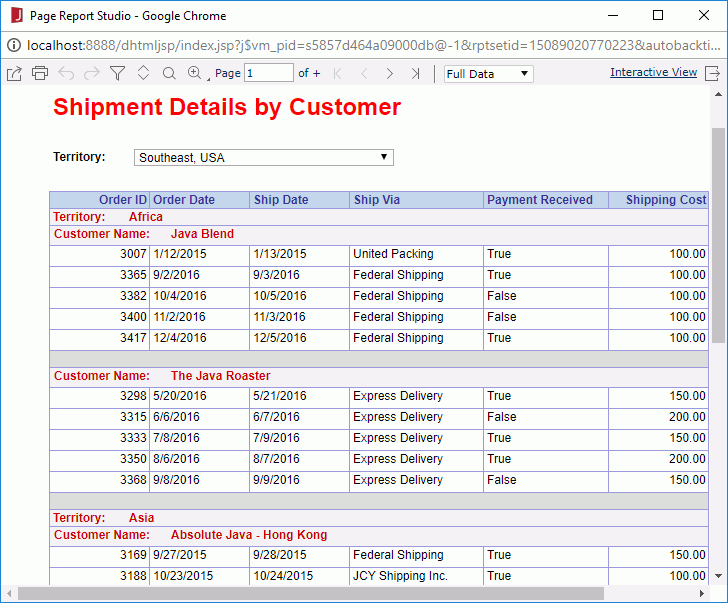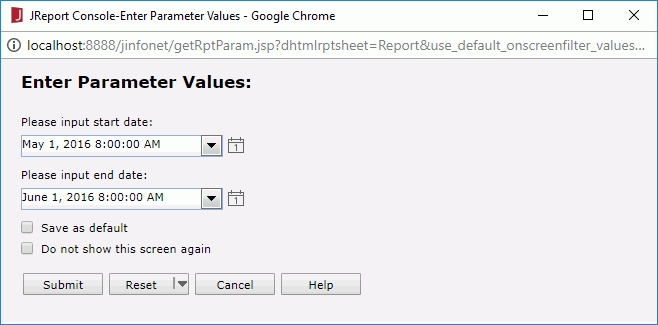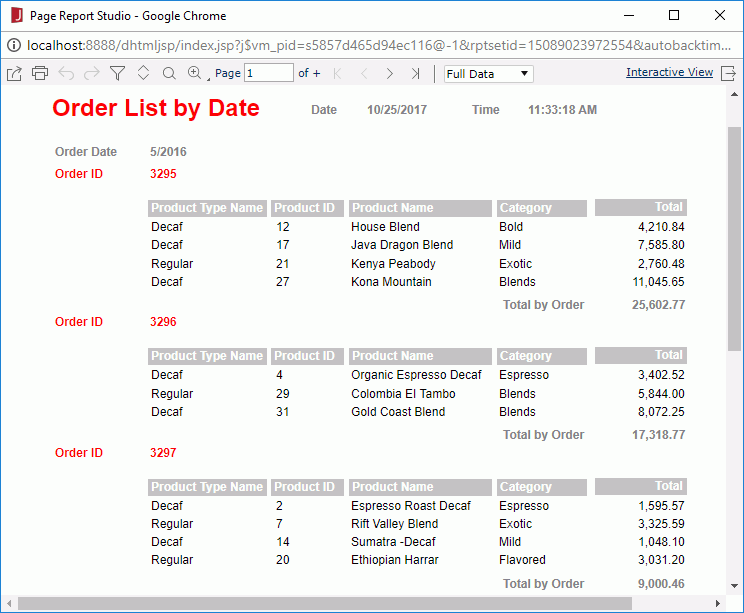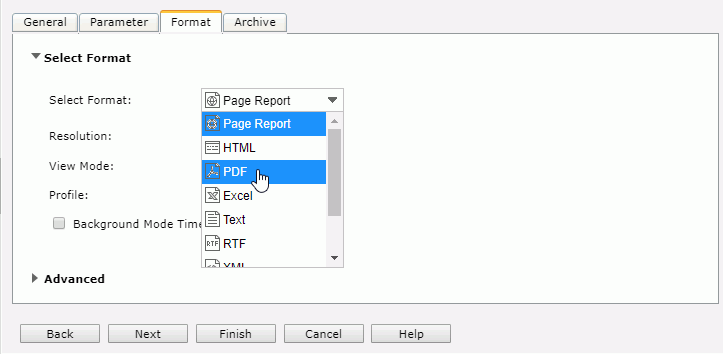Lesson 3: Running Reports
This topic describes how to run reports from the Logi JReport Server user console. This lesson represents one way that end users could access and run published reports. Reports that are embedded in a Java application would not be accessed from the user console, but instead from the Java application. The interaction with the report itself however would be the same as described here.
The reports you view in this lesson are in the JinfonetGourmetJava folder, which is the folder you published them to in Lesson 2 > Task 1 of this track. Before you can view the reports, make sure you have the Execute and/or Edit permissions on them.
- Task 1: Directly Run a Report
- Task 2: Run a Parameter-based Report
- Task 3: Run a Report in Advanced Mode
Task 1: Directly Run a Report
Direct running of reports is to use the default format setting to view the report result. By default, page reports (.cls) are opened in Page Report Studio and web reports (.wls) in Web Report Studio.
In this task, we will run a page report in the JinfonetGourmetJava folder as an example:
- On the Logi JReport Console page, go to the Public Reports > JinfonetGourmetJava folder.
- Select the ShipmentDetailsbyCustomer.cls link to run the report.
Page Report Studio then appears in a separate web browser window, with the report result for the ShipmentDetails report tab in the page report:

When you directly run a report, if the report contains parameters, you will be asked to specify the parameter values. See the next task for details.
Task 2: Run a Parameter-based Report
As you saw in the Creating a parameter-based report lesson, parameter-driven reports are another way to have a dynamic report. They allow the end users to specify the data that they want to see before the query is issued to the database. By only selecting the data that the report needs, the query is more efficient.
When a parameter-based report is run, Logi JReport Server automatically displays the Enter Parameter Values dialog to prompt the user for the expected values. Default values, if included in the report template definition, are also displayed.
To run the parameter-based report:
- In the JinfonetGourmetJava folder, select the OrderListbyDate_Parameter.cls link.
A new web browser window opens for you to enter the parameter values. The report template includes start date of May 1, 2015 and end date of June 1, 2015 as default. You can select Submit button to admit these defaults, or you can type new values to view the report.

- The requested report is displayed showing only order details from May 1, 2016 8:00:00 AM to June 1, 2016 8:00:00 AM.

Task 3: Run a Report in Advanced Mode
The Advanced Run command allows you to specify additional properties when running a report, for example you can specify a different report format instead of the default one. Options available include Applet, HTML, PDF, Text, Excel, Postscript, Rich Text Format (RTF), XML and Page Report. In this lesson we will run the report as PDF format.
- In the JinfonetGourmetJava folder, put the mouse pointer over the CustomerContactCard.cls report row, then select the Advanced Run button
 on the floating toolbar.
on the floating toolbar. - Select the Format tab and select PDF from the Select Format drop-down list, as shown below:

In this task, the additional options in the Advanced Run page are not used. However these options can be quite useful in real reporting scenarios. For example, you can specify database credentials under which the query should execute, or apply a style group so that the report has a different look.
- Select the Finish button. According to your Adobe configuration, the report is displayed as a PDF file in your web browser, or saved into the default download folder of your browser.
 Previous Topic
Previous Topic 